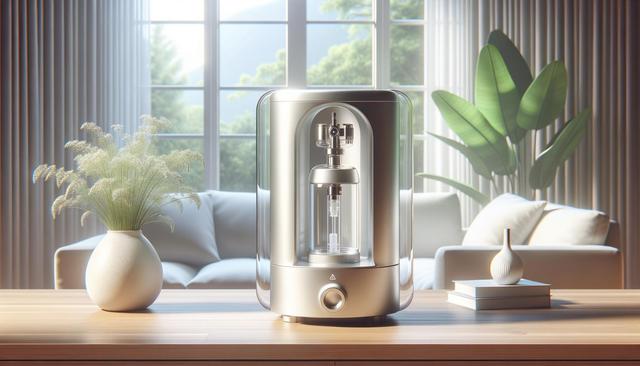Understanding How Oxygen Concentrators Work
Oxygen concentrators are medical devices designed to provide patients with a steady supply of oxygen-enriched air. They work by pulling in ambient air, filtering out nitrogen, and delivering concentrated oxygen to the user through a nasal cannula or mask. Unlike oxygen tanks, concentrators do not store oxygen but rather produce it continuously, making them a practical solution for long-term use. The technology behind these machines has evolved significantly in recent years, making them more compact, energy-efficient, and user-friendly.
Modern oxygen concentrators are available in two main types: stationary and portable. Stationary models are typically used at home and offer higher oxygen output, while portable units provide greater mobility and are suitable for travel. Both types are designed to meet different lifestyle and medical needs, and they often include features such as adjustable flow settings, quiet operation, and digital displays for ease of use. Understanding the working mechanism of these devices helps users make informed decisions about the kind of unit that best matches their health requirements.
Key Benefits of Using an Oxygen Concentrator
For individuals with chronic respiratory conditions like COPD, pulmonary fibrosis, or severe asthma, oxygen concentrators offer critical support. These devices help improve oxygen saturation levels in the blood, reduce the strain on the heart and lungs, and enhance overall energy levels. The benefits are not only physiological but also extend to improving quality of life and enabling greater independence.
Some of the most commonly recognized advantages include:
- Continuous oxygen supply without the need for refills
- Reduced dependence on hospital visits or emergency oxygen sources
- Customizable flow rates to suit individual medical needs
- Portability for travel and outdoor activities
These benefits make oxygen concentrators a reliable option for long-term respiratory therapy at home. Additionally, many users experience fewer symptoms of breathlessness and fatigue, allowing them to engage more actively in daily activities and social interactions.
Is This the Future of Home Breathing Support?
Given the advancements in design and functionality, it’s reasonable to consider oxygen concentrators as a forward-looking solution in the realm of home breathing support. Newer models are increasingly lightweight, quieter, and more intuitive to operate, making them more accessible for a broader range of users. Remote monitoring and app-based controls are also becoming standard, allowing healthcare providers to track patient usage and oxygen levels in real time.
As healthcare systems around the world shift their focus toward home-based care, oxygen concentrators are playing a vital role in this transition. They align with the growing demand for personalized, at-home medical solutions that reduce hospital admissions and promote better health outcomes. With insurance coverage and rental options also expanding, more people can access this technology without significant financial burden.
Choosing the Right Oxygen Concentrator
Selecting the right oxygen concentrator involves evaluating several factors, including oxygen output, battery life, weight, and noise level. It’s important to consult with a healthcare provider to determine the appropriate flow rate and whether a continuous or pulse dose delivery system is more suitable. Additionally, users should consider the environments in which they’ll use the device most often—whether at home, on the road, or both.
Key considerations when choosing a model include:
- Oxygen flow capacity (e.g., 1–5 liters per minute)
- Battery duration for portable units
- Ease of maintenance and filter replacement
- Availability of accessories like carrying cases and carts
Taking the time to understand these features ensures that users select a concentrator that aligns with their lifestyle and medical needs. Many devices also come with warranties and customer support services, which can provide additional peace of mind.
Maintaining and Using an Oxygen Concentrator Safely
Proper maintenance and usage are essential to ensure the device functions effectively and safely. This includes regular cleaning of filters, checking tubing for blockages, and storing the unit in a well-ventilated area. Users should also be aware of safety precautions such as keeping the device away from open flames and not using oil-based products near the unit, as oxygen can accelerate combustion.
Here are some maintenance tips to follow:
- Clean or replace filters as recommended by the manufacturer
- Inspect nasal cannulas and tubing for wear and tear
- Keep the device away from water and extreme temperatures
- Schedule regular checkups with a healthcare provider to monitor oxygen needs
Following these practices not only extends the lifespan of the concentrator but also ensures consistent performance. Educating users and caregivers about proper handling and emergency procedures further enhances safety and reliability.
Conclusion: Empowering Better Breathing at Home
Oxygen concentrators represent a significant advancement in respiratory care, offering a practical and effective solution for individuals managing chronic breathing conditions. As technology continues to improve, these devices are becoming more accessible, adaptable, and aligned with the needs of users seeking comfort and independence at home. Whether for daily use or travel, they provide a dependable way to maintain oxygen therapy without interrupting daily routines. By understanding how they work, weighing the benefits, and following best practices for use and maintenance, individuals can make informed choices that support long-term health and improved quality of life.




Leave a Reply